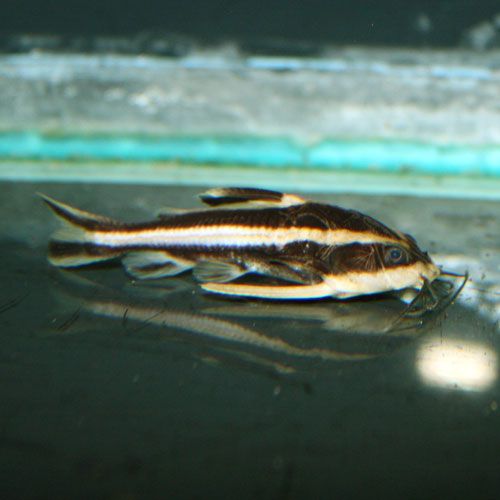Raphael Catfish: Care Guide

The Striped Raphael Catfish (Platydoras armatulus), also known as the Talking Catfish or Chocolate Doradid, is a popular freshwater catfish known for its distinctive appearance and interesting behavior. Native to the slow-moving rivers and flooded areas of South America, particularly in the Amazon basin, this species is well-loved by aquarists for its peaceful nature and ease of care.
Appearance and Behavior
The Striped Raphael Catfish has a distinctive, armored body covered with bony plates, which provide protection from predators. Its coloration is generally dark brown or black, with striking horizontal white or yellow stripes running along its body, from the head to the tail. These stripes help it blend into its surroundings in the wild.
One of the most intriguing aspects of this catfish is its ability to produce sounds. This “talking” behavior is achieved by rubbing its pectoral fins against its body, producing a grunting or clicking noise, especially when it’s agitated or during feeding.
The Striped Raphael is a nocturnal fish, meaning it is most active during the night. During the day, it prefers to hide in caves, under rocks, or among dense plants. Despite its armored appearance, this species is peaceful and can coexist with a variety of other fish, making it a good addition to a community tank.
Tank Requirements
Striped Raphael Catfish are relatively hardy and easy to care for, but they still have specific needs:
- Tank Size: A minimum of 30 gallons (113 liters) is recommended, though larger tanks are better, especially if you plan to house multiple catfish or other tank mates.
- Water Conditions: Maintain a temperature between 72-79°F (22-26°C) with a pH level between 6.0 and 7.5. They prefer soft to moderately hard water.
- Substrate and Decor: A soft substrate, like sand or smooth gravel, is ideal, as these catfish like to burrow and hide. Provide plenty of hiding spots with caves, driftwood, and rocks, as they are shy and need places to retreat during the day.
- Lighting: Low to moderate lighting is best, as they are nocturnal and prefer dim environments.
Diet
Striped Raphael Catfish are omnivores with a preference for a varied diet. In the wild, they feed on insects, crustaceans, and plant matter. In captivity, their diet should include:
- Sinking Pellets: High-quality sinking catfish pellets or wafers should form the base of their diet.
- Live/Frozen Food: Offer bloodworms, brine shrimp, and tubifex worms as treats. They also enjoy small pieces of shrimp or fish.
- Vegetables: Supplement their diet with blanched vegetables like zucchini, cucumber, or peas.
Feeding should be done in the evening or after lights out, as they are most active during this time.
Health and Lifespan
Striped Raphael Catfish are generally hardy and can live for 10-15 years or more with proper care. They are resistant to many common fish diseases, thanks to their armored body. However, maintaining good water quality is still crucial to prevent stress and potential infections.
- Water Quality: Regular water changes and proper filtration are essential.
- Tank Mates: They can be kept with a wide range of peaceful fish, such as tetras, barbs, and other catfish. Avoid housing them with overly aggressive species that might bully them.
Breeding
Breeding Striped Raphael Catfish in captivity is challenging and rarely occurs. In the wild, they are known to be cave spawners, laying eggs in hidden areas. If breeding does happen, the eggs are usually guarded by the male until they hatch. However, due to their nocturnal and secretive nature, successful breeding in home aquariums is uncommon.
Social Behavior
This species is generally peaceful and can be kept with other non-aggressive fish. They are best kept in groups, as they are social creatures and enjoy the company of their own kind. However, they are also known for being shy and reclusive, spending much of their time hiding during the day.
Interesting Facts
- Talking Catfish: The “talking” ability of the Striped Raphael Catfish is a unique trait among catfish, making them a fascinating species to observe.
- Armored Protection: Their bony plates not only protect them from predators but also make them less susceptible to injuries in the tank.
- Longevity: With proper care, they can live for over a decade, making them a long-term commitment for aquarists.
The Striped Raphael Catfish is an excellent choice for both beginner and experienced fishkeepers due to its hardy nature, peaceful temperament, and unique behaviors.


